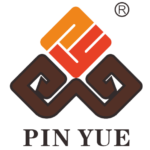Types of Plastic Woven Bags: Materials, Designs, and Applications
Plastic woven bags are a versatile and widely used packaging solution, suitable for a variety of industries and purposes. From advertising to heavy-duty packaging, the choice of material and design plays a crucial role in determining the bag’s functionality and appeal. This article explores the most common types of woven bag materials—white cardboard, kraft paper, and coated paper—and their unique characteristics, design requirements, and applications.
1. White Cardboard Woven Bags
White cardboard woven bags are known for their high strength and excellent print quality, making them a popular choice for high-end packaging and advertising. Here are their key features:
Features:
- High Strength: White cardboard is inherently strong, making it ideal for packaging premium products.
- Smooth Texture: Compared to other materials, white cardboard feels smooth and refined, giving the bag a luxurious appearance.
- Superior Print Quality: The smooth surface of white cardboard allows for vibrant and detailed prints, suitable for complex designs.
- Higher Cost: White cardboard woven bags are more expensive than other types, but their premium quality justifies the price.
Applications:
- High-end product packaging (e.g., electronics, cosmetics).
- Advertising and promotional bags.
- Retail shopping bags with intricate designs.
2. Whiteboard Paper Woven Bags
Whiteboard paper woven bags are a cost-effective and durable option, commonly used for packaging heavier items. Here’s what makes them stand out:
Features:
- High Durability: Whiteboard paper is strong and flexible, making it suitable for heavy-duty use.
- Simple Printing: Due to its texture, whiteboard paper is best suited for printing text, lines, or solid color blocks.
- No Lamination Needed: These bags often do not require lamination, reducing production costs.
- Affordable: Whiteboard paper woven bags are more budget-friendly compared to white cardboard.
Applications:
- Packaging for construction materials (e.g., cement, sand).
- Industrial product packaging.
- Basic shopping bags with minimal design elements.
3. Kraft Paper Woven Bags
Kraft paper woven bags are known for their durability and natural aesthetic, making them a popular choice for eco-friendly packaging. Here’s why they’re a great option:
Features:
- High Strength: Kraft paper is highly durable, making it suitable for heavy or bulky items.
- Cost-Effective: The material is affordable, reducing overall production costs.
- Design Flexibility: While white kraft paper is available, the more common brown kraft paper is ideal for printing dark text, lines, or bold color blocks.
- Eco-Friendly Appeal: Kraft paper has a natural, rustic look that appeals to environmentally conscious consumers.
Applications:
- Packaging for agricultural products (e.g., grains, seeds).
- Eco-friendly shopping bags.
- Industrial and logistics packaging.
4. Coated Paper Woven Bags
Coated paper woven bags are prized for their high gloss and excellent print performance, making them a top choice for advertising and branding. Here’s what sets them apart:
Features:
- High Gloss Finish: Coated paper has a smooth, shiny surface that enhances the visual appeal of printed designs.
- Superior Print Quality: Ideal for printing detailed patterns, images, and text.
- Waterproof and Fade-Resistant: The lamination process makes these bags waterproof and prevents printed elements from fading.
- Moderate Durability: While not as strong as kraft paper, coated paper woven bags are suitable for lightweight to medium-weight items.
Applications:
- Advertising and promotional bags.
- Retail shopping bags with vibrant designs.
- Packaging for consumer goods (e.g., clothing, accessories).
5. How to Choose the Right Woven Bag Material
When selecting a woven bag material, consider the following factors:
- Purpose: Determine whether the bag is for heavy-duty use, advertising, or retail.
- Design Requirements: Choose a material that supports the desired print quality and design complexity.
- Budget: Balance cost with the need for durability and aesthetics.
- Eco-Friendliness: Opt for materials like kraft paper if sustainability is a priority.
6. The Future of Woven Bag Materials
As sustainability becomes a global priority, the demand for eco-friendly woven bag materials is on the rise. Innovations in biodegradable coatings, recycled materials, and advanced printing techniques are shaping the future of woven bags, making them more sustainable and visually appealing.
Conclusion
Plastic woven bags come in various materials, each with its strengths and design requirements. Whether you need the luxurious appeal of white cardboard, the durability of kraft paper, or the high gloss of coated paper, there’s a woven bag material to meet your needs. By understanding each type’s unique features and applications, you can make an informed decision and choose the perfect woven bag for your packaging or advertising requirements. Embrace the versatility of woven bags and elevate your brand with the right material and design.
